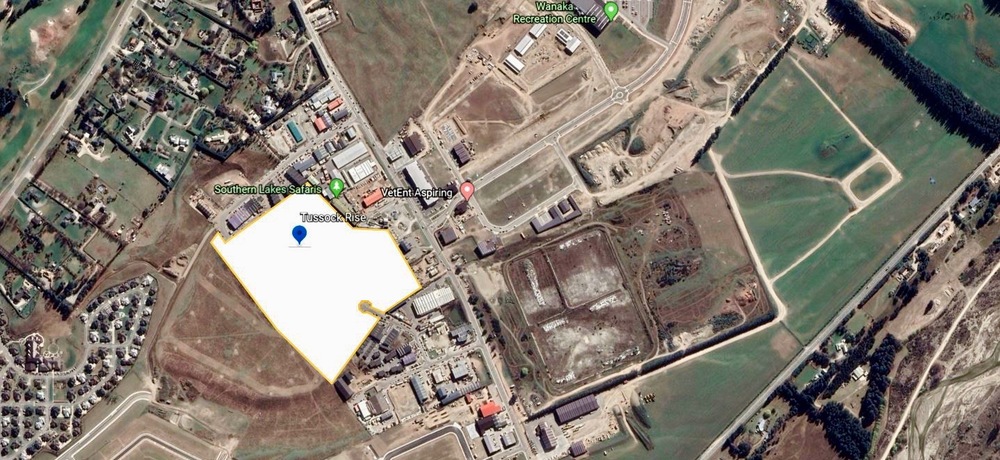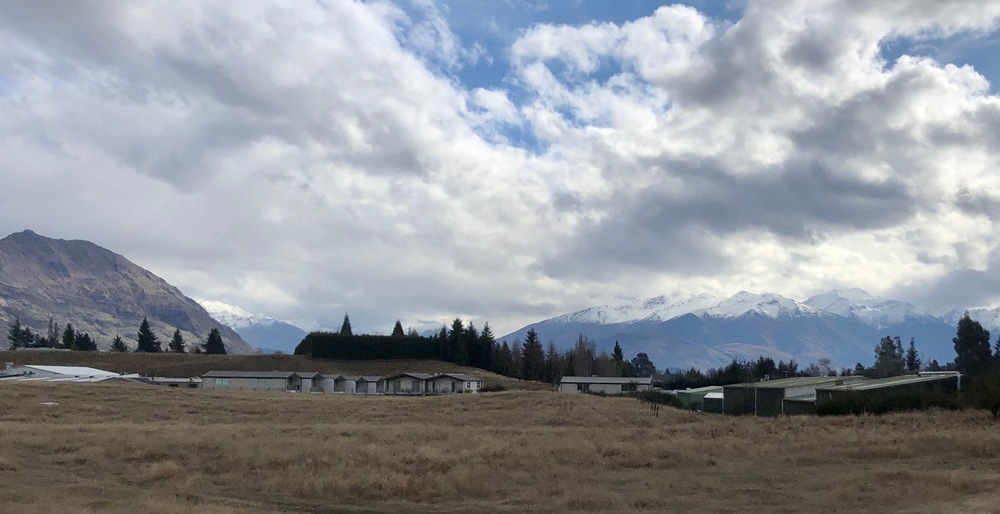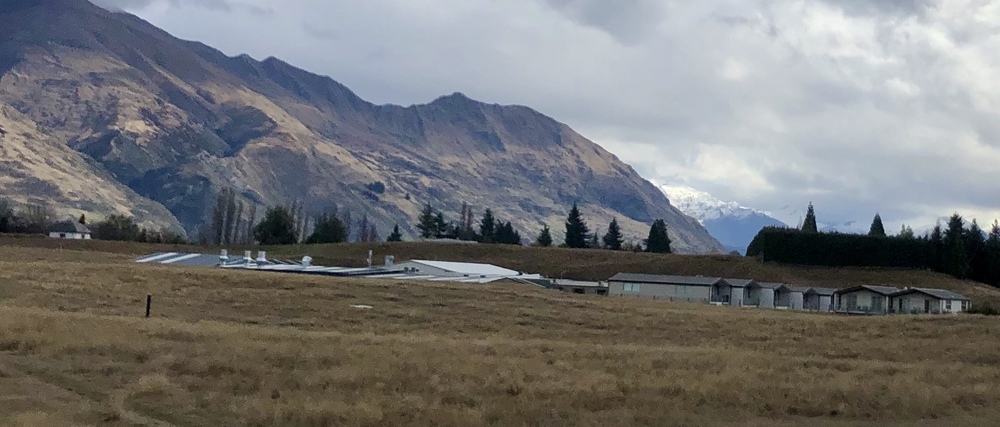Land rezoning a heated topic (6min read)
Diana Cocks
06 August 2020, 6:04 PM
 The undeveloped land of Tussock Rise sits on an elevated terrace beside the Bright Sky residential land. PHOTO: Supplied
The undeveloped land of Tussock Rise sits on an elevated terrace beside the Bright Sky residential land. PHOTO: SuppliedA recent decision by an Environment Court judge to award a Wanaka land development company Tussock Rise Limited (TRL) costs has highlighted the complex and frustrating process of the Queenstown Lakes District Council’s (QLDC) district plan review.
In a rare finding against a district council carrying out a district plan review, Judge Jon Jackson criticised the council for a “flawed” plan change process that was "contradictory and confused".
The QLDC said TRL’s appeal against the council’s plan to change the TRL land’s zoning was “frivolous or vexatious” and took the company to the court. Judge Jackson disagreed. Refusing to strike out the appeal, he instead awarded TRL more than $5,000 in costs.
In a recent letter to the editor of the Wanaka Sun, the council defended its position. QLDC spokesperson Jack Barlow said council has no issues with TRL seeking an independent plan change.
“The only reason council sought to have Tussock Rise’s appeal struck out was a desire to have all the industrial zones … dealt with together”, and this will be achieved at the public hearings on stage three of its proposed district plan (PDP) next week in Wanaka," he said.

A 2017 council commissioned report assessing the capacity of Wanaka’s industrial zones said there was more than enough capacity through to at least 2048. PHOTO: Supplied
His comments struck a false note with TRL’s owners Grant Bissett and Paul Miller who applied to council for a plan change to have its 9.3ha rezoned from Industrial B to business mixed-use (BMU) in 2016. The application was rejected by council on the grounds that their land had only just been rezoned industrial to meet Wanaka’s future industrial needs.
Zoning background
In 2013, the council identified a need for more industrial zoned land in Wanaka and decided the most suitable land for further industry would be the Ballantyne Road area (including Gordon Road and Frederick Street) where business development and yard based industry was already established.
Council rezoned this land to Industrial A (light industrial) and Industrial B (heavy industrial). Heavy industrial was described by council staff in 2016 as a “pure industrial area where less desirable industrial activities could locate”.
TRL purchased 9.3ha of this Industrial B zoned land in 2016 and immediately applied for a plan change to business mixed use (BMU) to match several of the neighbouring properties, notably on Gordon and Ballantyne Roads.

Tussock Rise land sits above the businesses and residential flats on Gordon Road. PHOTO: Wanaka App
The QLDC began its district plan review in 2015 reassessing the underlying zoning of all land in the district and creating a new proposed district plan (PDP). In 2019, stage 3 of the PDP was notified and included the council’s desire to support the district’s industrial economy by rezoning an even larger portion of Ballantyne Road area into a new industrial zone, replacing Industrial A and B with General Industrial Zone (GIZ).
This new GIZ overlaid not only TRL’s land but also all the businesses established on Gordon, Ballantyne and Frederick Streets operating under the rule of a BMU zone. BMU permits commercial, retail, office and residential activities. GIZ does not.
In 2017, council contracted Market Economics to assess Wanaka’s capacity for business development. Its report showed sufficient capacity for all business land uses in the short, medium and long-term through to 2048.
It said the total area already zoned for business use, including industrial land, was so great that the council could afford to remove the 20ha former sewage ponds site from its general industrial zone and it “would not adversely impact business capacity for Wanaka”. The council is now proposing to rezone the entire pond site to an Active Sports and Recreation zone.
In a recent statement council said the proposed GIZ would not create an oversupply of industrial land, rather it would “cater for cohesive zone growth and provide certainty to businesses and the community on where industrial growth will be focused”.
Tussock Rise vs QLDC
TRL owners Grant Bissett and Paul Miller believe this rezoning of land was inappropriate on at least three counts: it will be detrimental to businesses within the zone which were established and are operating under BMU and yard-based industrial zoning; it fails to take into account the potentially detrimental effects of industrial land immediately bordering residential land; and it could provide an oversupply of industrial land.
TRL land is bordered by a BMU zone with commercial, retail, recreational and professional businesses and some residential flats; a light industrial zone with concrete making, engineering and manufacturing; and an undeveloped residential zone.
If the land is changed to GIZ, it will make almost 50 per cent of the existing tenancies adjacent to TRL land either prohibited or non-complying, Grant said, and could lead to a devaluation of their property. This included the current residences, commercial/retail businesses and commercial recreational (gyms) activities.
These owners will have to rely on existing use rights to continue to live and operate; any future change though, such as modifying or selling it, and those rights will be extinguished, he said.
Instead, Tussock Rise is suggesting expanding the current BMU zone to include their 9.3ha, with manufacturing businesses located closest to its boundary with the industrial zone of Frederick Street, and mixed residential and commercial activities, including an IT park and worker accommodation, blending towards its boundary with residential developments.
“What we’re proposing is a sensible transition from business mixed-use and higher-density residential bleeding out to lower density residential. That’s consistently been our view,” Grant said. “That would produce a sensible, sustainable long-term outcome for the town.”
“Having been in real estate in Wanaka for the last 20 years [I believe] this model is what the town wants and needs,” Paul said.
Council disagreed. It said while the 2016 TRL plan change objectives, featuring innovation and energy performance, were “commendable”, they do not outweigh the long-term benefits of a dedicated industrial area where less than desirable industrial activities can be located unencumbered by residential sensitivities.
And even though the expansion of the industrial area in PDP would mean more of its industrial zones would border on residential zones, the “reverse sensitivities” detrimental to a residential suburb, such as noise, pollution, dust, and heavy traffic, could be managed or offset by “buffer zones”.
In the case of TRL’s land the buffer would be a planted mound running the 392m between its land and the Bright Sky residential land. The 15m-20m wide earth mound, complete with dense plantings and standing 8-11m high, would be built on Tussock Rise land, at the company’s cost. It must be 70 per cent complete before any other construction can begin on the land.
Also unhappy with the proposed new zoning are Shona and Bob Wallace. They live on Golf Course Road and have been petitioning the QLDC since 1986 to ensure Wanaka’s industrial zone around Ballantyne Road does not encroach on the elevated terrace behind them (comprising Tussock Rise and Bright Sky land).

Shona and Bob Wallace’s home is just visible at the left of the picture looking across Tussock Rise land. PHOTO: Wanaka App
Shona told the Wanaka App she has been before the Environment Court four times in 34 years; in that time neighbouring land has been rezoned from rural to residential and now industrial.
A few years ago she relented and did not object to business mixed use and industrial zones on Gordon and Ballantyne Roads, “provided they stuck to the low land”, she said.
But now council wants industrial land on the terrace, she said. “That’s buildings up to 10m high and noisy industry overlooking residential areas and I don’t know where it’s going to end.”
She said they had a meeting at her place recently, inviting many neighbours who will be affected by the new zone who had not been informed of the council’s proposal. “They should have at least been notified,” she said.
She said Grant and Paul have the right idea and are trying to do the right thing and she will present her case in support of the Tussock Rise at the PDP independent hearing panel at the Lake Wanaka Centre next week.
Paul and Grant will also be making a submission to the hearing panel next week.






